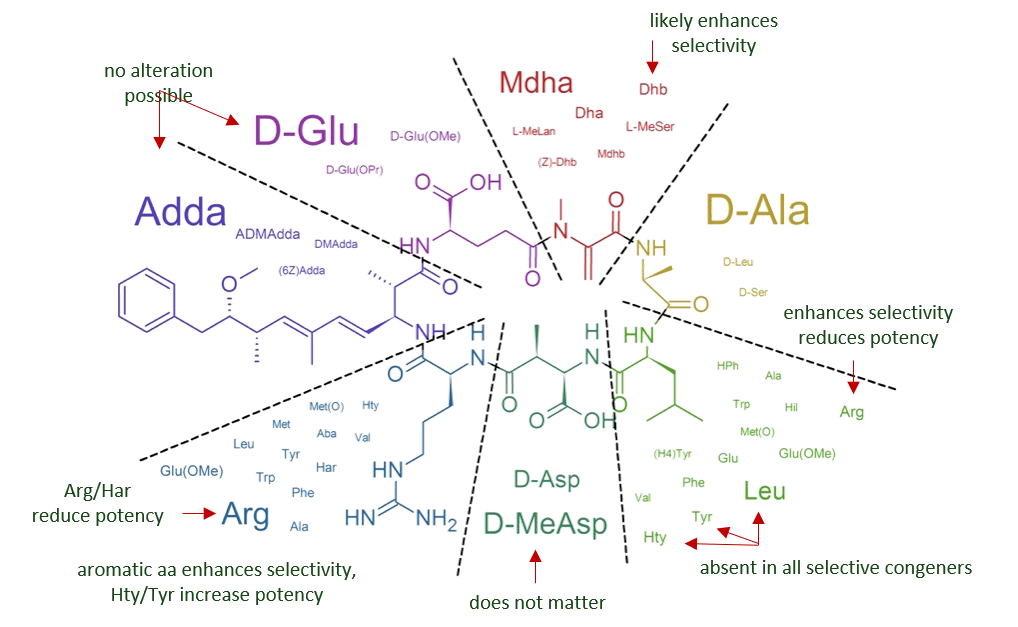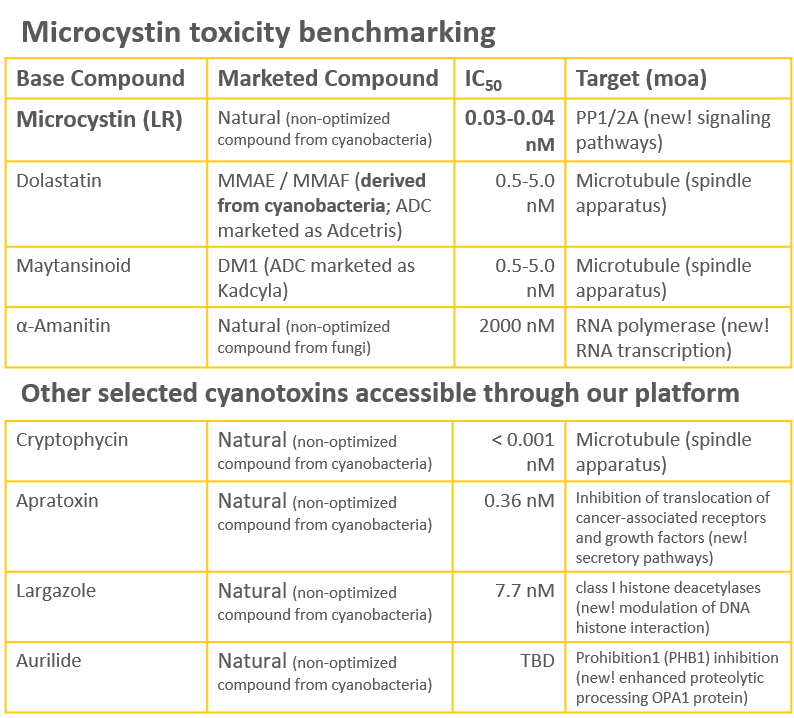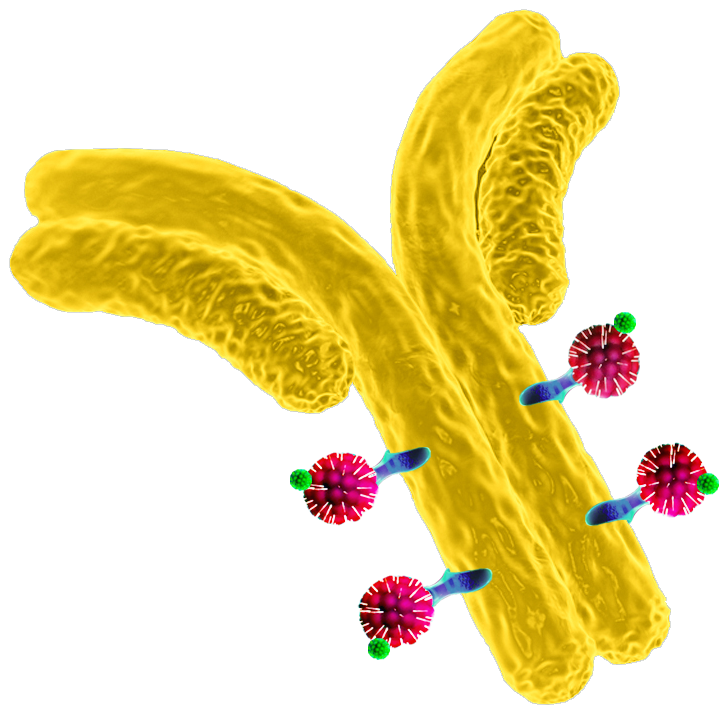Microcystin-based payloads with clickable anchor groups
The company is the world market leader in manufacturing and sale of analytical standards of microcystins (MCs). Deep research of the toxin group resulted in many scientific papers and pioneering work to understand structure-activity relationships (SAR).
- Mode of action: inhibition of protein phosphatase 1 and 2A (PP1/2A); NEW for anticancer treatments
- Potency: in vitro activities on PP1/2A inhibition with IC50 ranging from 30 pM to 11.5 nM
- Selective transport into the cell: determined with OATP1B1/OATP1B3 transfected RKO and HeLa cells
- Structure-activity relationship (SAR) for MC concerning PP1/2A inhibition, selective transport into cells and toxicity, resp. supported by co-crystallization of MC and PP1/2A
- In vivo data from rats (data from humanized mice pending)
Using our proprietary payload production platform we opened up a well-known group of highly potent toxins to improve its properties, made them clickable to linkers/MABs, and made them proprietary.

Naturally occurring microcystins are transported into cells either by OATP1B1 or OATP1B3 or by both. Essential amino acids for bioactivity, selective transport and potency have been identified through SAR investigations based on 22 structural variants. We focus on those microcystins which are non-toxic to healthy tissue but show a high toxicity in certain tumor cells. The toxins are only toxic if released in the tumor cell, e.g. mediated by the MAB of the ADC. They are non-toxic for non-malignant tissue if accidently released.
We made known highly potent toxins with a new mode of action suitable for use in ADCs:
- novel, proprietary, and patentable structures
- fast and easy clickable to MABs
- non-toxic for non-malignant (healthy) tissue
- potentially labeled with fluorescence dyes for diagnosis


